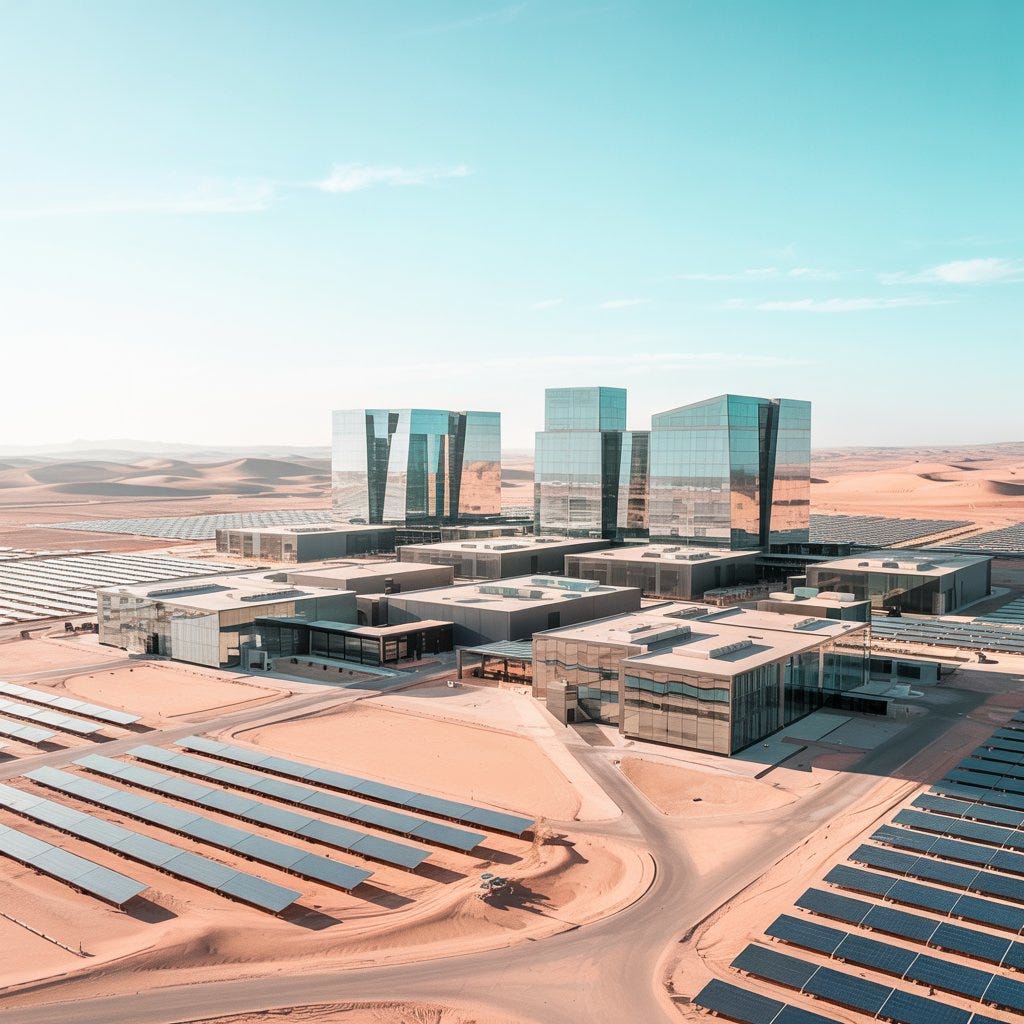Welcome to Global Data Center Hub. Join investors, operators, and innovators reading to stay ahead of the latest trends in the data center sector in developed and emerging markets globally
From $20B sovereign AI hubs in Riyadh to a 500MW GPU city planned in Morocco and solar-powered aviation clouds in Dubai the first half of 2025 repositioned the Middle East & Africa from “frontier” to sovereign compute battleground.
We saw:
$75B+ in AI/data-center commitments across the Gulf, North Africa, and Sub-Saharan Africa
Sovereign AI laws and national visions (2030/2040) turning compute into state infrastructure
Private capital stacking into neutral interconnect, powered land, and GPU factories
Energy strategies (utility PPAs, green corridors) fused directly to campus design
Power/GPU bottlenecks shaping which metros scale and which stall
H1 2025 wasn’t just growth. It was a strategic realignment.
This is your MEA recap of the 12 most important shifts and what they signal for global AI infrastructure.
Here’s What’s Inside
Top 12 announcements ranked — from Saudi’s $20B AI hub to Morocco’s 500MW NVIDIA campus
5 key infrastructure trends — sovereign compute, REIT/JV capital, GPU corridors, energy moats, African AI-first builds
5 emerging opportunities — GPU hosting, sovereign cloud JVs, renewable-linked AI factories, Tier-II African colos, powered-land banking
5 regional shifts — Riyadh globalizes, Abu Dhabi fuses power+compute, Lagos scales, North Africa rises, East Africa connects
5 critical constraints — power scarcity, GPU access, policy lags, climate risk, talent gaps
Top 12 MEA Announcements (H1 2025)
Below are the most impactful strategic moves shaping the Middle East & Africa data center sector in the first half of 2025, ranked by capital scale, geopolitical significance, and long-term market implications.
Keep reading with a 7-day free trial
Subscribe to Global Data Center Hub to keep reading this post and get 7 days of free access to the full post archives.

